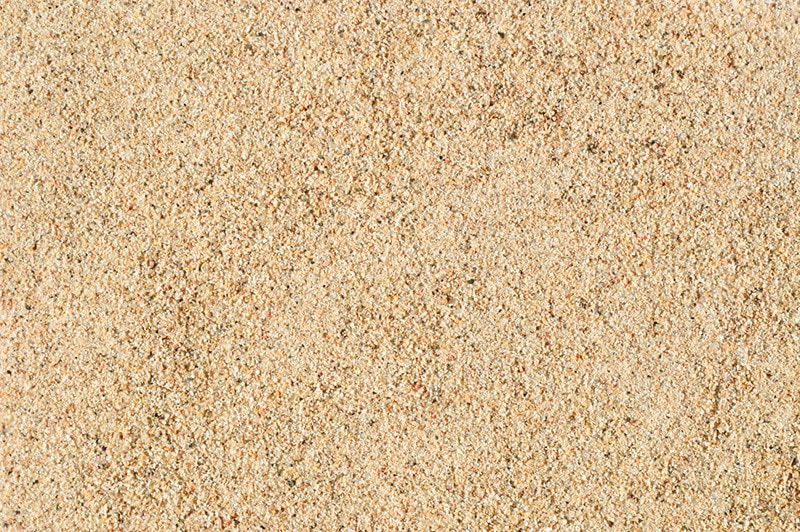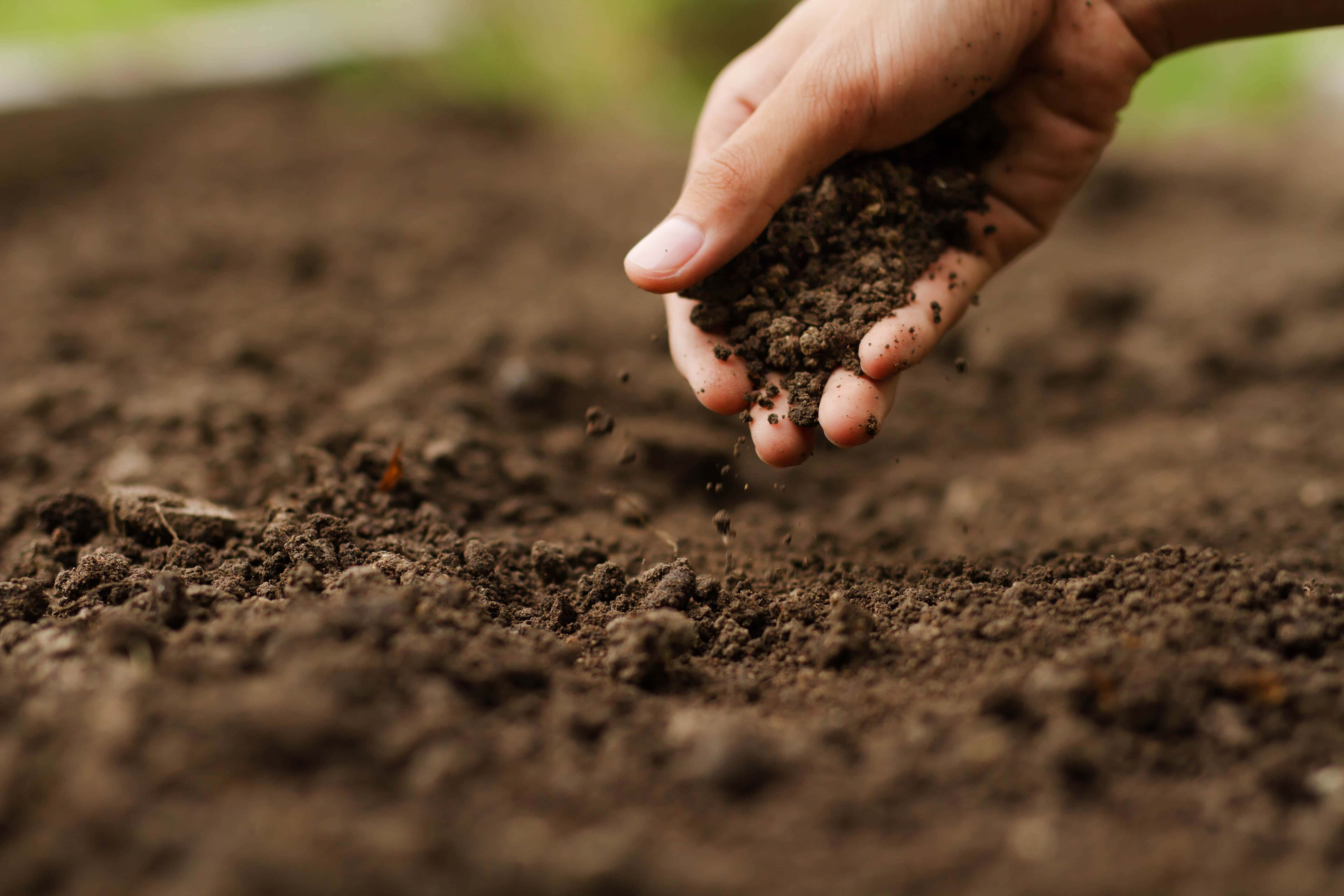What Is Horticultural Sand? Pros, Cons and FAQs
-
Codee Chessher
- Last updated:

Horticultural or gardening sand is an unsung hero of any garden, but many people aren’t aware of what exactly it is, what it does, and how it can help your plants thrive.
If you’re looking for ways to up your gardening game, look no further. Read on below to find out what horticultural sand is made of, how it can help you, and more.
What Is Horticultural Sand How Does It Work?
Also known as gardening sand or coarse sand, horticultural sand is a blend of eroded, crushed sand and natural minerals that looks like coarsely ground sand. The actual composition of horticultural sand varies, but common ingredients include crushed sandstone, quartz, and sandstone. Feldspar, pumice, and coral are a couple of others that are sometimes used for specific gardening situations. We’ll touch on those a little later on.
You’re probably wondering why you’d spring for a special kind of sand when you can get it at, say, a beach. While beach sand is largely composed of sand, it also contains a ton of salt, crushed stone, seashells, and other matter. High salt content alone is a plant killer, which is why you don’t see many plants thriving on beaches.
Another major difference is the size of the sand particles. Beach sand and other naturally occurring sand particles are oftentimes too fine to be of use in the garden. While beach sand particles are usually just a millimeter in diameter, coarse horticultural sand has a lot of particles as large as two to four times that size. Don’t get us wrong, there’s some fine sand in the mix, too.

So, just what does this sand do for your plants? The main use is to improve drainage in your soil, but there are several other important benefits. The large, coarse sand particles create air gaps in the soil that allow water, nutrients, and oxygen to flow through, where they’re absorbed by your plant’s roots. Too fine of a sand particle wouldn’t leave room for those essentials.
Horticultural sand helps prevent compacted soil too, and it’s especially prized for heavy clay soils. Clay doesn’t let things flow very well, and coarse sand does wonders for improving water and nutrient uptake by creating air gaps in the soil. That’s the biggest reason gardeners (and we) always recommend amending clay soil with liberal doses of coarse horticultural sand.
As well as letting water flow, it keeps it nearby for longer too. Horticultural sand holds water and nutrients for longer than fine sand particles, giving your plant more time to soak it all up.
The exact blend of horticultural sand depends on what type of plants are being grown, the soil conditions, and even the weather. And that leads us to our next section about specific horticultural sand blends, so stay tuned for more details.

Can I Use Other Types of Sand for Gardening?
Yes. Horticultural sand is typically the best type to use for plants, but you can use other types of sand in a pinch. When you have very heavy clay soil, nearly any sand is better than none at all. Let’s delve into the other types of sand you can use to improve drainage for heavy, compacted soils.
Builder’s Sand
Made of a blend of fine and coarse sand particles and commonly used for leveling, builder’s sand can be used as a general drainage amendment. The main issue is that you have to check its salt content since not all builder’s sand is created equal, and a type with too much salt can quickly kill plants.

Aquarium Sand
Aquarium sand is a sterile mix of silica-based sand, often with fine and coarse sand particles. Unlike other horticultural sand substitutes, aquarium sand is sterile and contains no contaminants. That doesn’t guarantee the absence of harmful stuff, though, so be careful about using a lot at a time.
Silica Sand
Silica sand is a sterile mix made of small silica particles, which beach sand also has a lot of. Unlike beach sand, silica sand doesn’t have any sodium or other contaminants. If you use this sand in your garden, we’d suggest adding some compost or just using it sparingly since it won’t hold nutrients very well.

Gravel
Also used for decorative effects, small gravel stones are essential for some potted plants, which need ample drainage. You can also create layers of small gravel in the soil to enhance drainage, but it’s far from ideal. Too much, and water won’t stick around long enough to be sucked up by your plant’s roots. It’s also good as a mulch to help retain moisture in the soil.
Where Is Horticultural Sand Used?
Horticultural sand is used nearly everywhere with compacted soil where people live and grow plants. You can use it to break up heavy clay soil, or just to lighten up a soil blend that turned out too thick. Our best tip for using horticultural sand is to start small. Use about half of a cup per bag of commercial potting soil to produce a more well-draining mix.
It’s also essential for cacti and succulents, which despise persistently wet roots or “wet feet.” Those plants need water and nutrients like all others but need more drainage too. Use about a cup of coarse horticultural sand per bag of commercial potting soil to create a more cacti-friendly mix.

Advantages of Horticultural Sand
- Enhances drainage & aeration: by holding water and nutrients for a time, horticultural sand lets plants suck up the good stuff without suffocating them
- Boosts root growth: compacted soil can stunt root growth, so judicious use of coarse sand can have a huge effect on your plant’s root and overall health
- Improves soil water retention: ironically, sand helps water retention by letting water drain faster, which lets plants soak up the perfect amount of water & nutrients and preventing chronically saturated soil
- Helps prevent harmful mold & disease: better drainage means a lower risk of root rot and other molds from hurting your plant
Disadvantages of Horticultural Sand
- Limited availability: specialty horticultural sand is typically only sold at some specialty gardening stores and online, so it can be hard to come by
- Easy to overuse: too much coarse sand can be detrimental, so be careful and start with small amounts
- Inconsistent quality: quality varies, and some horticultural sand may have high levels of sodium or other possibly dangerous contaminants
- Needs frequent reapplication: horticultural sand washes away very easily and breaks down just as fast too, so consider adding more biweekly or monthly during rainy spells
Frequently Asked Questions (FAQs) About Horticultural Sand
Does Horticultural Sand Impact Soil pH Levels?
No. Horticultural sand is usually free of organic and other matter that could affect soil pH to any significant degree. Silica and other sandy crushed stones are virtually chemically inert, so pH isn’t an issue. Using lime or sulfur with sand can help lower or raise pH as well as tackle the drainage issue.

What Should I Mix With Horticultural Sand for a Balanced Soil Blend?
Sand helps drainage but needs to be balanced with other amendments. Compost, peat moss, vermiculite, and perlite are other ingredients used to improve soil structure while preserving the benefits of horticultural sand.
When Should I Not Use Horticultural Sand in My Garden?
You don’t always need coarse sand in your soil. Plants that need persistently moist or damp soil don’t need sand, and it would actually hurt them. Climates that get lots of rain typically won’t benefit from horticultural sand either—it doesn’t work well with large volumes of water, and will quickly clog up. That’s a fast track to root rot and other fatal plant conditions.
Conclusion
Horticultural sand is a valuable tool for when your soil isn’t draining well enough, but it’s best used in small doses. If needed, you can add more, but too much can actually be bad for your plant.
Featured Image Credit: manfredrichter, Pixabay
Contents

